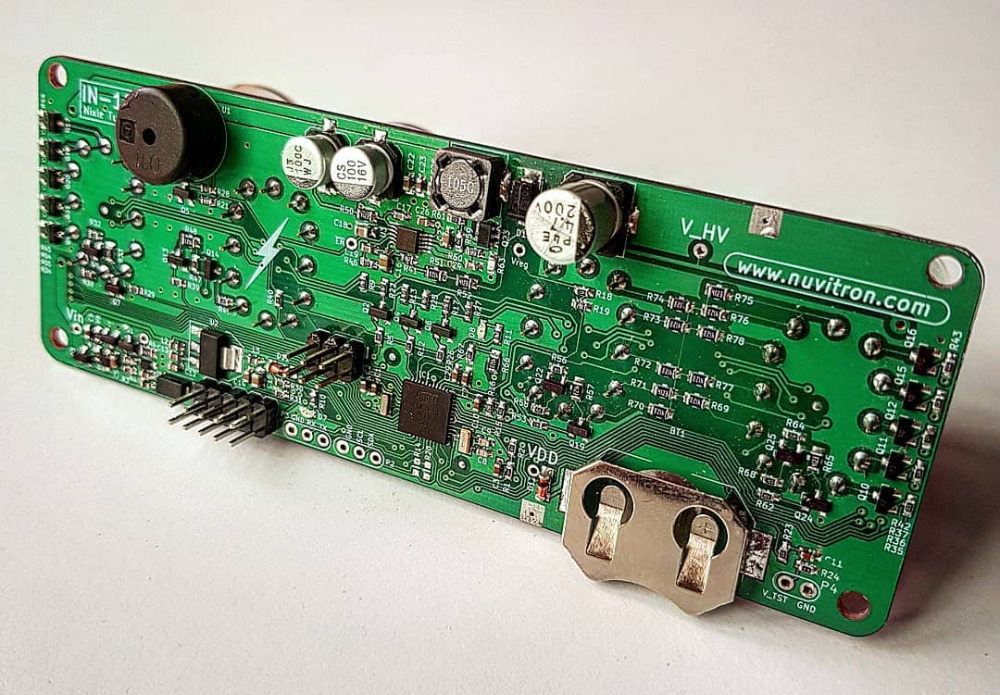What is a Nixie Tube Clock?
Nixie tubes were popular like 40 years ago. Used in military-grade equipment, these cold cathode tubes were some of the first technologies used for displays. There's quite a bit of low vacuum science involved, and require operation voltages that may seem insane for today's electronic devices: say 160 volts.
Tubes come in different flavours. The one used here is the reference IN-12. Take a few of these, arrange them nicely and voilà!, you have a Nixie Clock. Why do they matter today? 'cuz they look awesome!. No, seriously, because their unique vintage look generates an exceptional contrast with today's modern aesthetic; and because the excercise of using modern hobby electronics to make them glow is a challenge worth taking.

Simple 8-bits MCU
From the AVR family, 32KB Flash and 2KB RAM is all that's needed to pack a lot of features, besides including a fair amount of peripheral timers to synchronize all time-critical tasks. Easily programmable via cheap third-party programmers and using the AVR linux toolchain.
No external RTC needed
The MCU includes a built-in RTC peripheral, and the whole CPU is able to run at voltages as low as 1.8V, thus, allowing the use of coin cells as back-up power and simplifying the overall design.
Fully customizable
Code already includes many features such as RGB LED color variation routines, song themes for use with the alarm, built-in functional test, serial debug port, brightness levels variation, among others.